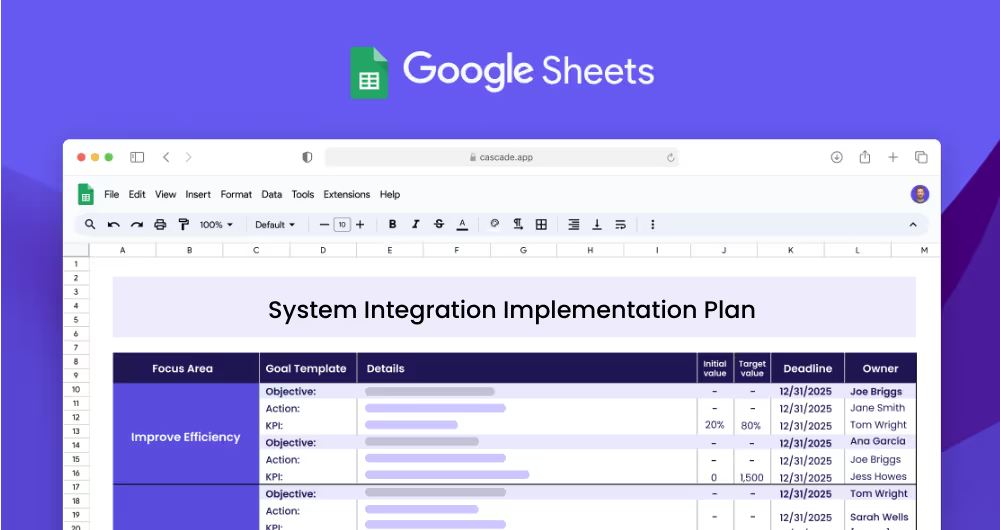A system integration implementation plan is a comprehensive strategy for organizations to effectively integrate two or more systems. It includes initiatives, resource allocation, timelines, and risk management strategies to ensure a successful implementation. This plan should be tailored to the specific needs of the organization and the systems being integrated.
Each focus area has its own objectives, projects, and KPIs to ensure that the strategy is comprehensive and effective.
This plan template is designed for IT and project teams who are looking to develop a comprehensive plan for the successful implementation of system integration projects. It helps teams identify the scope of the project, objectives, actions, and measurable targets needed for successful system integration.
The focus areas are the overarching topics that you wish to address with your system integration implementation plan. In this plan template, there are three focus areas: system integration, risk management, and resource allocation. Each focus area should have its own objectives, actions, and measurable targets (KPIs) to ensure success.
Objectives are the goals that you need to achieve in order to meet the focus area. For example, under the focus area of system integration, objectives could include streamlining integration processes and increasing efficiency. These objectives should be measurable and have a timeline for completion.
Key Performance Indicators (KPIs) are measurable targets that help you track progress toward achieving your objectives. KPIs should be specific and have a concrete target, initial value, and unit of measure. For example, under the objective of increasing efficiency of system integrations, the KPI could be “Increase success rate of integrations” with a target of 95%, initial value of 80%, and a unit of measure of %.
Projects, or actions, are the steps that need to be taken in order to achieve the desired KPI. Projects should be specific and designed to help achieve the desired result. For example, under the KPI of “Increase success rate of integrations”, the related project could be “Implement automation processes”.
If you’re looking to enhance the precision and efficiency of your strategies, Cascade Strategy Execution Software offers a powerful alternative to traditional spreadsheets. Cascade facilitates centralized collaboration and real-time updates, ensuring that every aspect of your strategic plan aligns perfectly with organizational goals. Experience an environment where strategy execution is synchronized and straightforward. Sign-up for free or book a demo and propel your strategies toward successful outcomes far quicker than ever before.


